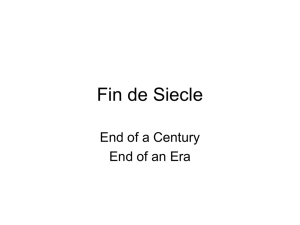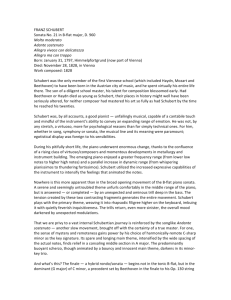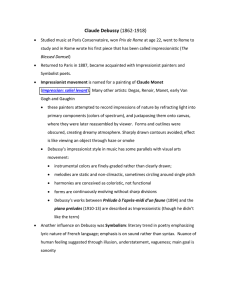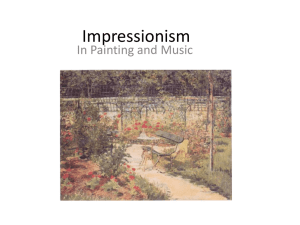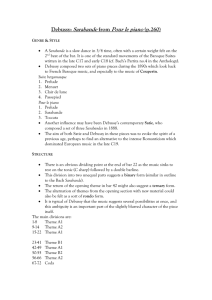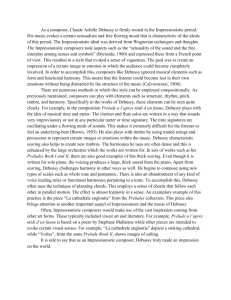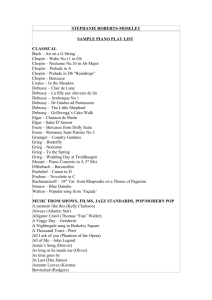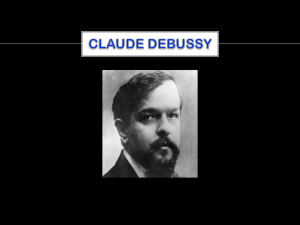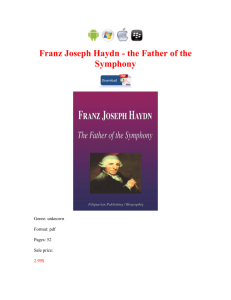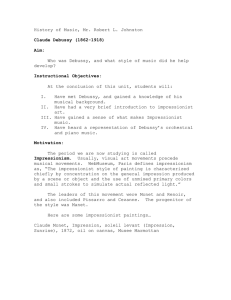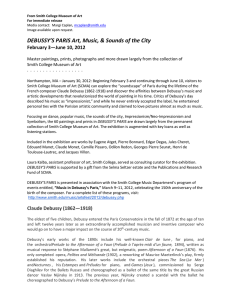Claude Debussy Sesquicentennial Robert Holm, piano UNIVERSITY OF SOUTH ALABAMA
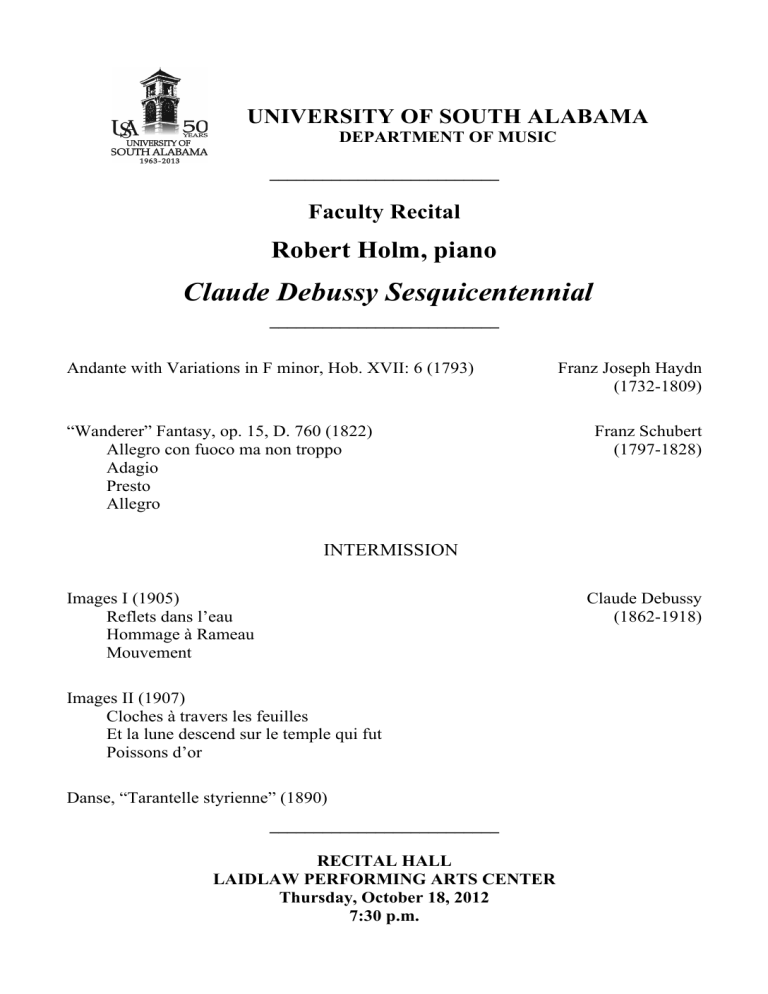
UNIVERSITY OF SOUTH ALABAMA
DEPARTMENT OF MUSIC
__________________________
Faculty Recital
Robert Holm, piano
Claude Debussy Sesquicentennial
__________________________
Andante with Variations in F minor, Hob. XVII: 6 (1793)
“Wanderer” Fantasy, op. 15, D. 760 (1822)
Allegro con fuoco ma non troppo
Adagio
Presto
Allegro
INTERMISSION
Franz Joseph Haydn
(1732-1809)
Franz Schubert
(1797-1828)
Images I (1905)
Reflets dans l’eau
Hommage à Rameau
Mouvement
Images II (1907)
Cloches à travers les feuilles
Et la lune descend sur le temple qui fut
Poissons d’or
Danse, “Tarantelle styrienne” (1890)
__________________________
RECITAL HALL
LAIDLAW PERFORMING ARTS CENTER
Thursday, October 18, 2012
7:30 p.m.
Claude Debussy
(1862-1918)
Program Notes
On August 22 nd , the musical world celebrated the 150 th anniversary of the great French composer Claude Debussy. 65 years before Debussy’s birth, Franz Schubert was born and
65 years prior to that, Franz Joseph Haydn was born.
Haydn’s F minor Variations are a set of double variations including a theme in F minor in binary form followed by a theme in F major in binary form. The piece originally was intended to end after the 2 nd variation as the first movement of a planned Sonata, but Haydn reworked the ending with a large-scale capriccio coda. The rich sonority of the piece is likely the result of Haydn’s recent trip to London where he had the opportunity to play the heavy, sonorous Broadwood pianos that Beethoven would later prefer.
In Schubert’s 31 years of life he composed more than 1000 works, including more than 600
Lieder (German songs with piano accompaniment). The Wanderer Fantasy is a fourmovement work in which each movement is based on the same theme, “Das Wanderer,” a song Schubert wrote in 1816. The first movement begins with a march-like first theme in C major and then the same theme is found transformed in E-flat in the position of the usual subordinate theme. The second movement in C-sharp minor begins with the most literal rendition of the theme, beginning very slowly, followed by a series of character variations with increasingly fast note values. The scherzo movement in A-flat major leads to the finale, a fugato back in C major, with the most virtuosic passages found in Schubert’s music. The piano virtuoso Franz Liszt would later make transcriptions of the Wander Fantasy and several other well-known Schubert songs. Liszt also regularly adopted the idea of thematic transformation, which is first found famously in the Wanderer Fantasy.
In the early 20 th century Debussy published in short succession Estampes, Masques and
L’Isle joyeuse . At the same time in August 1905, he sent the first set of Images to the publisher Durand with the following statement: “Without undue vanity, I believe that these three pieces can hold their own and will assume a place in the piano literature to the left of
Schumann or to the right of Chopin… as you like it.” French Impressionism which appeals to the senses with regard to color, water and structural ambiguity comes to life with
Reflections on the Water . Another common idea among French composers was
Neoclassicism, where in Hommage à Rameau , Debussy lavishes chromatic harmonic structure and a section of parallel augmented chords upon a Baroque-style Sarabande rhythm in memory of the French Baroque musical giant. Mouvement recalls the perpetual motion style in similar movements of Franck and Fauré but ends very unexpectedly with a two-page coda entirely based on the whole-tone (whole step) scale.
Three years later Debussy released his second set of Images , entirely written on three staves of music throughout. The Bells through leaves (or foliage) continues Debussy’s preference for whole tone scales while And the moon descends on the Ancient temple (or temple that was) features parallelism with an exotic Oriental flavor. Goldfish was likely inspired by a black enamel painting, which was in his possession and now resides in Saint-Germain-en-
Laye.
In 1890, at about the same time Debussy composed his most famous work Clair de Lune from Suite Bergamasque , he also wrote Danse , a light hearted Rondo which alternates between three-four and six-eight time, often resembling a tarantella.
